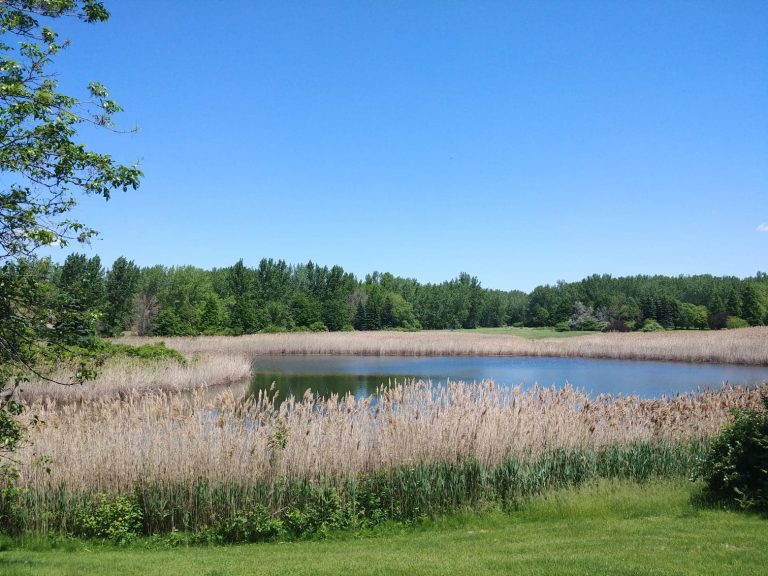
Common reed (Phragmites australis) is a grass (Poaceae) native to Europe and Asia. It aggressively colonizes wetlands, beaches, agricultural ditches, roadsides and any vacant fields. In Quebec, it has been around since 1916. It competes with cattails (Typha sp.) and the native common reed, from which only a few populations remain. The invasion of common reed peaked in the sixties, while Quebec highways were being built. They acted as dispersal corridors, directly opening virgin areas now disturbed. In Laval, you may notice it along almost all roadsides and around most natural environments adjacent to urbanised areas.
Common reed disperses its many seeds through wind action, which is why it is a fast spreading pioneer species. In Quebec, it can also undergo vegetative reproduction through creeping stems, also called stolons, or when fragments are dispersed and generate their own rooting systems in favourable habitats (which seems to be basically anywhere!). A dramatic example is the colony on Boucherville island. The population expanded from 1 to 33 hectares between 1980 and 2002.
Common reed also has an allelopathic effect on surrounding plants because its roots emit a chemical compound inhibiting the growth other plants.
.jpg)
Populations form dense and tall (up to 5 meters) clusters which makes them uninteresting wildlife habitat since they are difficult for animals to walk through, compared, for instance, to a cattail marsh. The high stem densities (345 stems per square meter) inhibit the survival of useful plants for wildlife.
However, this plant has a very high transpiration rate, which make it quite efficient to absorb pollutants and decontaminate soils. Large populations also change and greatly reduce the water levels of ponds and marshes, which again can change their wildlife potential.
Sources
Ontario's invading species awareness program
Le naturaliste canadien (in French)
Sentinelle – Quebec's government (in French)



